Abstract
Tetramitus rostratus and strains of Hartmanella, Naegleria, and Vahlkampfia consumed large numbers of Rhizobium meliloti cells in a salt solution, but protozoan multiplication and the bacterial decline stopped when the prey density fell to about 106 to 107 cells/ml. At higher prey densities, the maximum numbers of Hartmanella sp. and Naegleria sp. were proportional to the quantity of R. meliloti initially provided to the amoebas. When supplemental rhizobia were supplied to Hartmanella sp. or Naegleria sp. after their active feeding had terminated, presumably because the remaining 106 or 107 bacteria/ml could not be captured, replication of the protozoa was initiated. The rate of elimination of rhizobia present in large populations was proportional to the initial abundance of Naegleria sp., but the final numbers of amoebas and surviving R. meliloti cells were independent of initial numbers of predators. The surviving bacteria were not intrinsically resistant to attack because 98% of the survivors, when concentrated, were consumed. It is suggested that large populations of bacteria in nature may be reduced in size by predatory protozoa, but many of the prey cells will not be eliminated.
Full text
PDF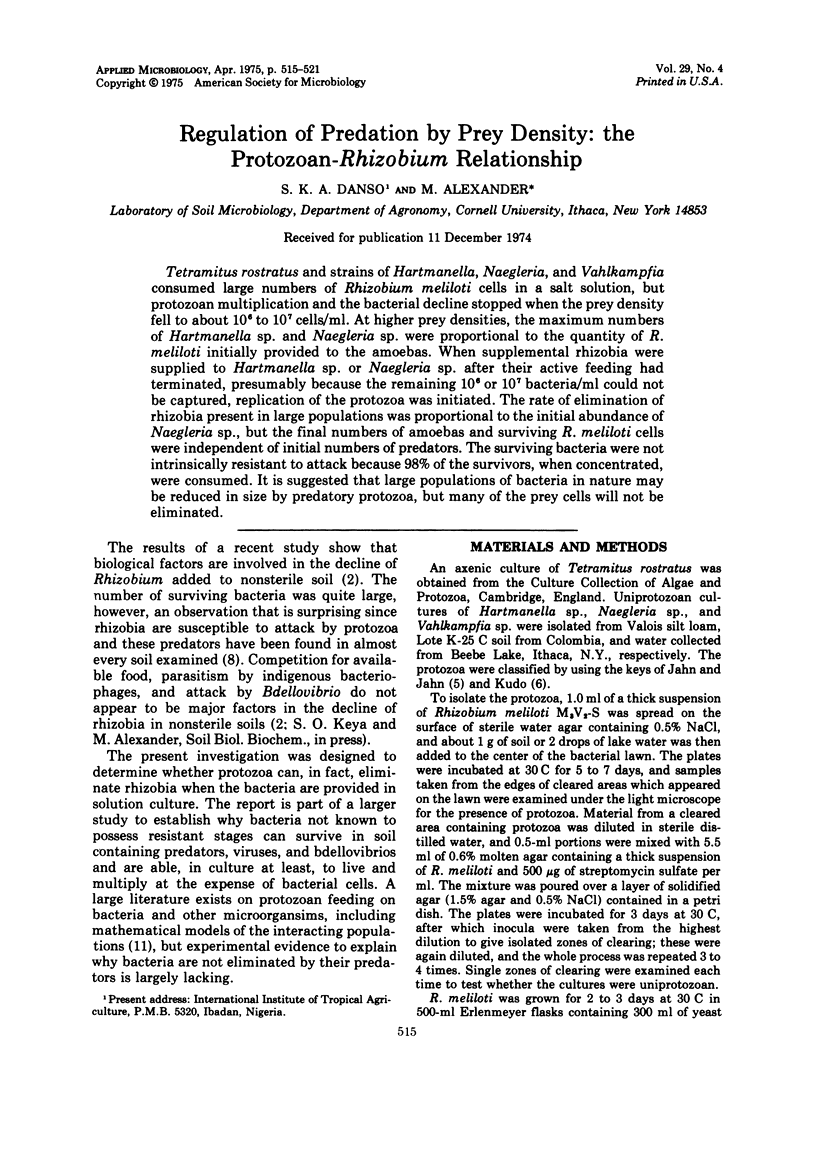
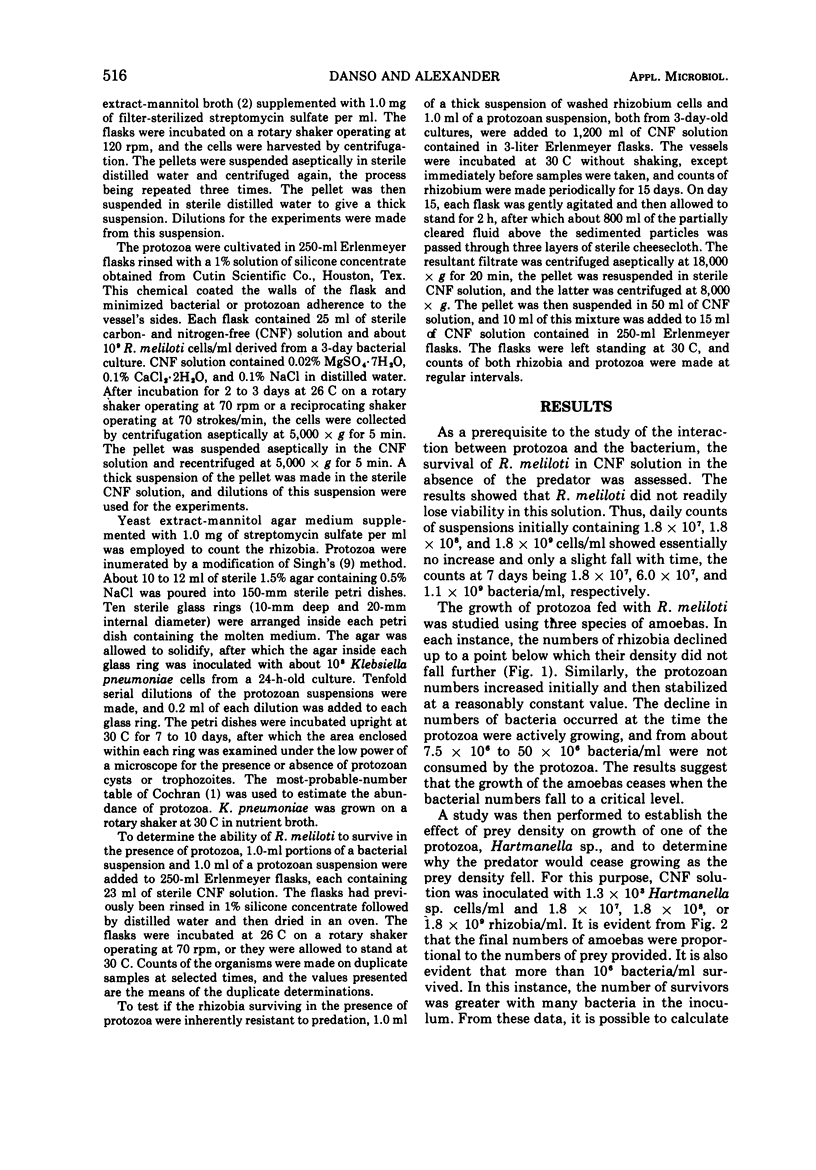
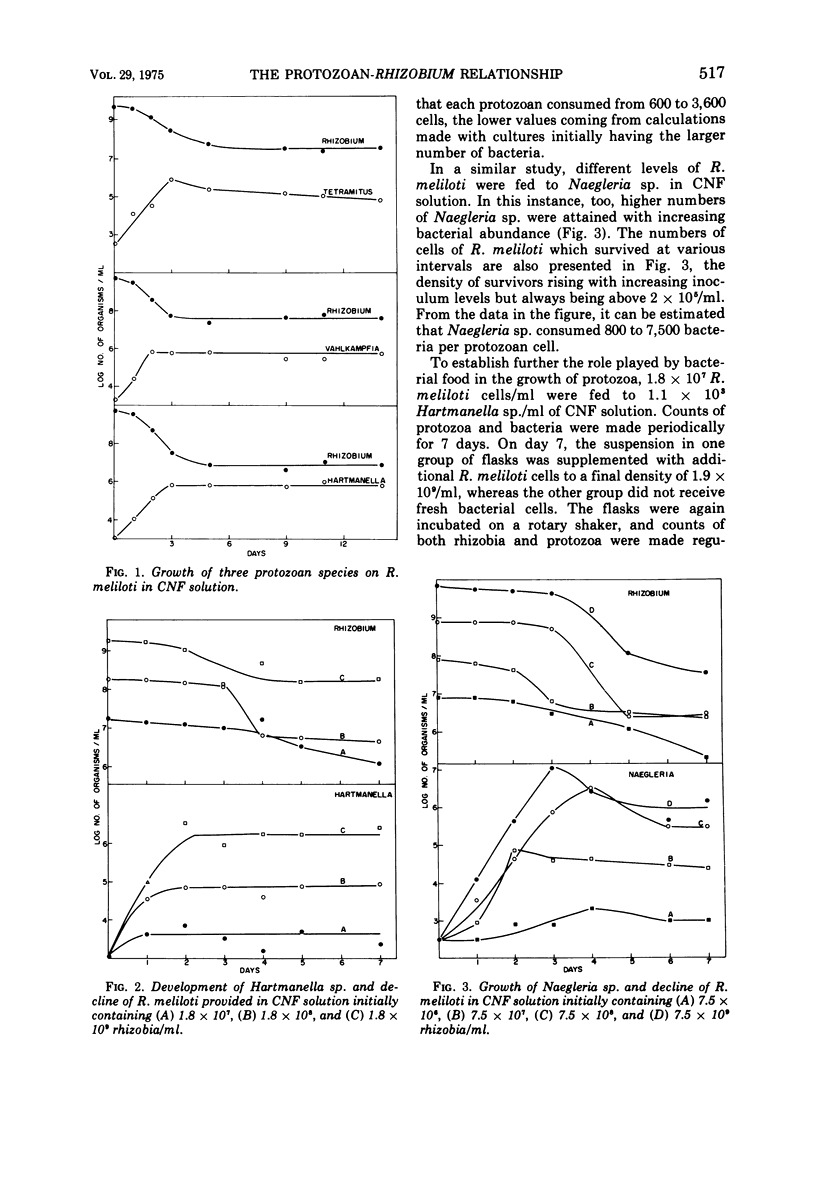
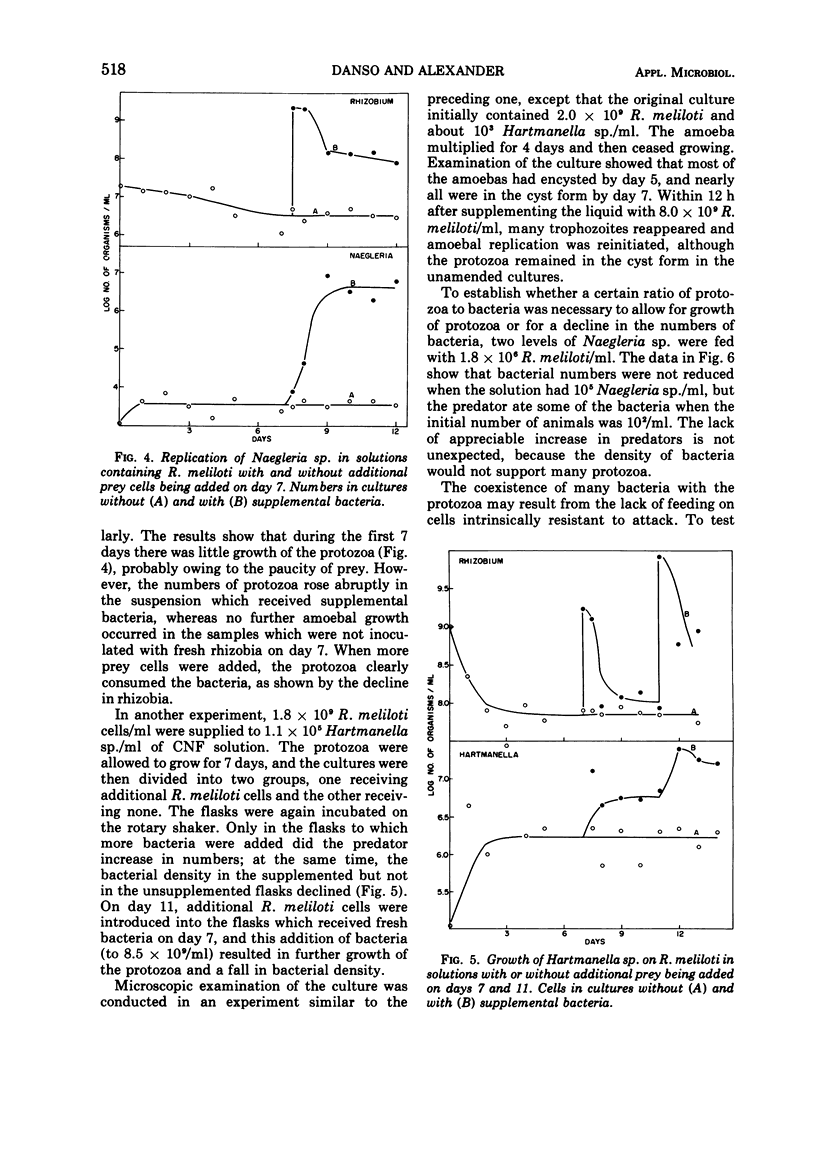
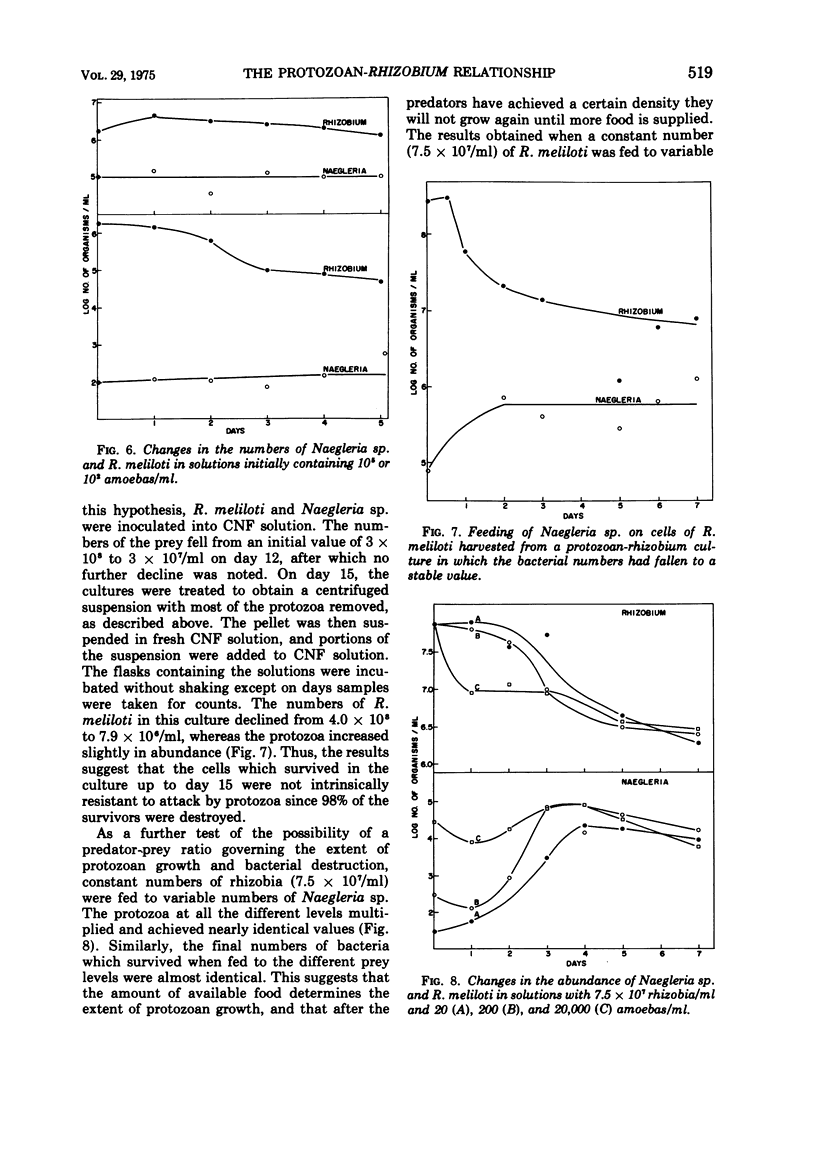
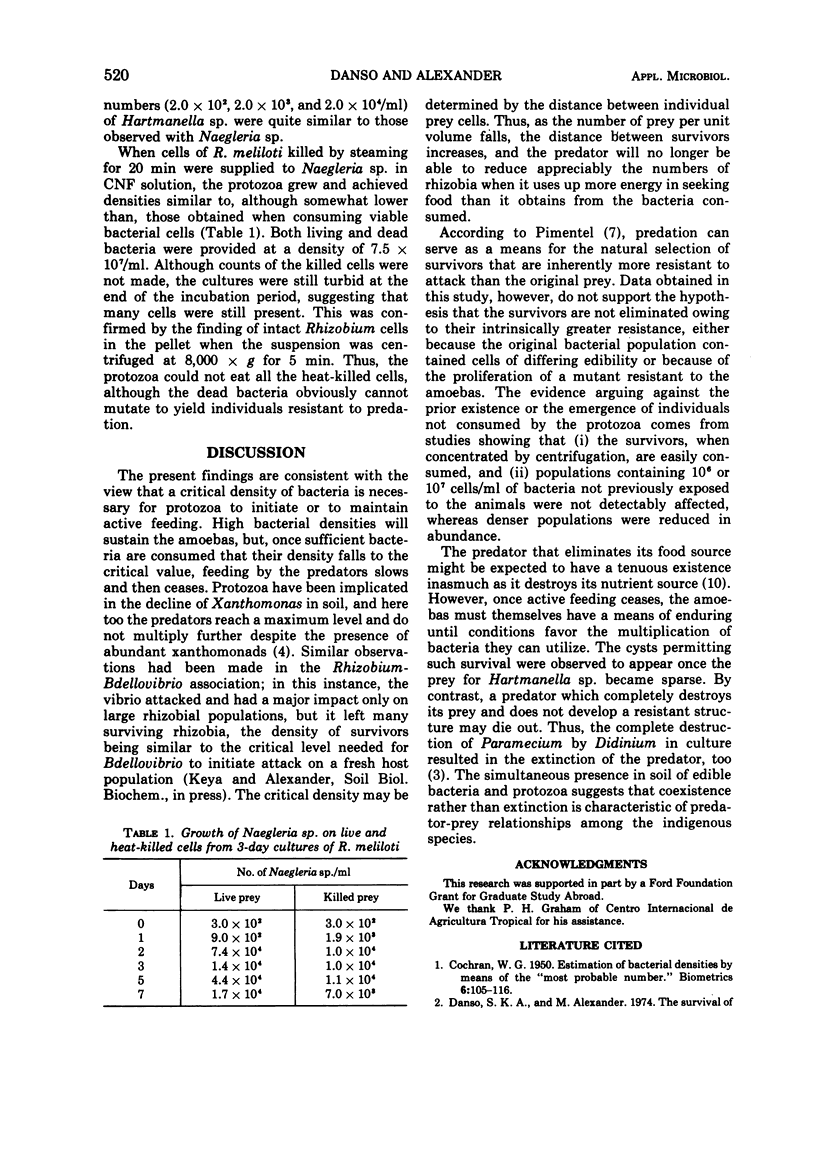
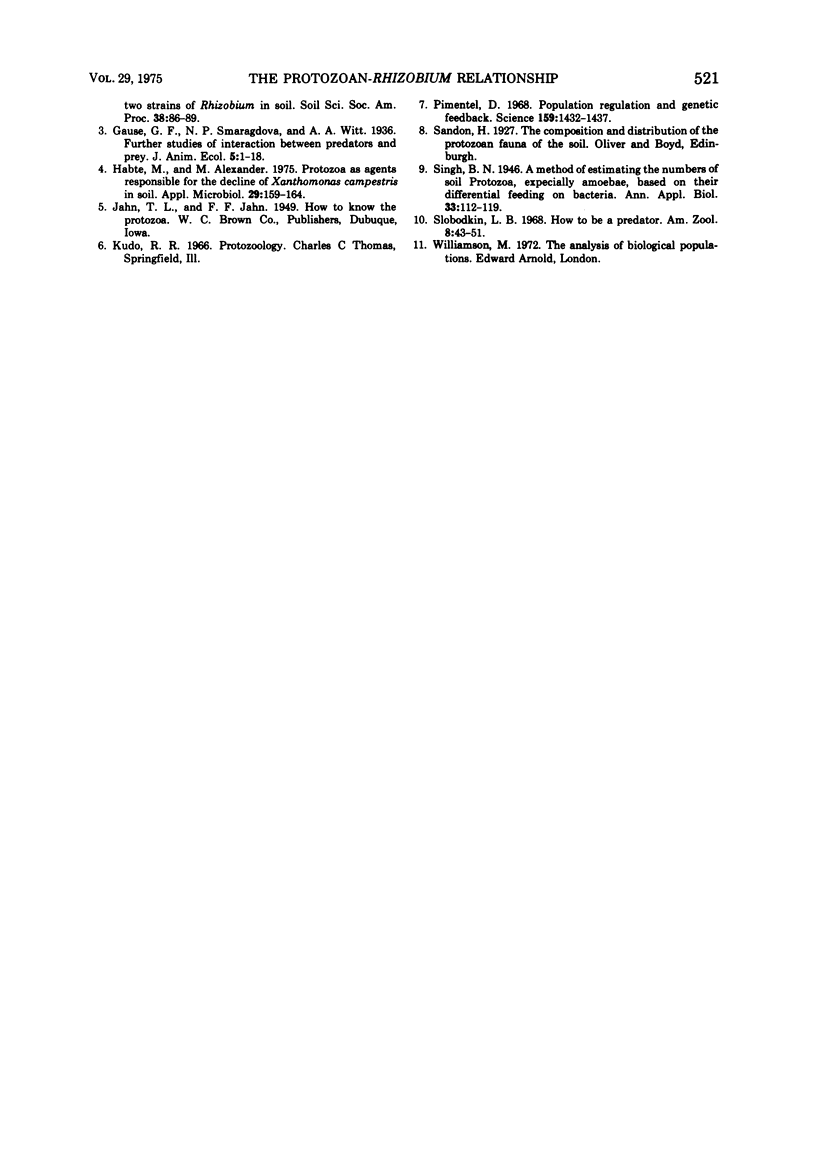
Selected References
These references are in PubMed. This may not be the complete list of references from this article.
- COCHRAN W. G. Estimation of bacterial densities by means of the "most probable number". Biometrics. 1950 Jun;6(2):105–116. [PubMed] [Google Scholar]
- Habte M., Alexander M. Protozoa as agents responsible for the decline of Xanthomonas campestris in soil. Appl Microbiol. 1975 Feb;29(2):159–164. doi: 10.1128/am.29.2.159-164.1975. [DOI] [PMC free article] [PubMed] [Google Scholar]
- Pimentel D. Population regulation and genetic feedback. Evolution provides foundation for control of herbivore, parasite, and predator numbers in nature. Science. 1968 Mar 29;159(3822):1432–1437. doi: 10.1126/science.159.3822.1432. [DOI] [PubMed] [Google Scholar]


